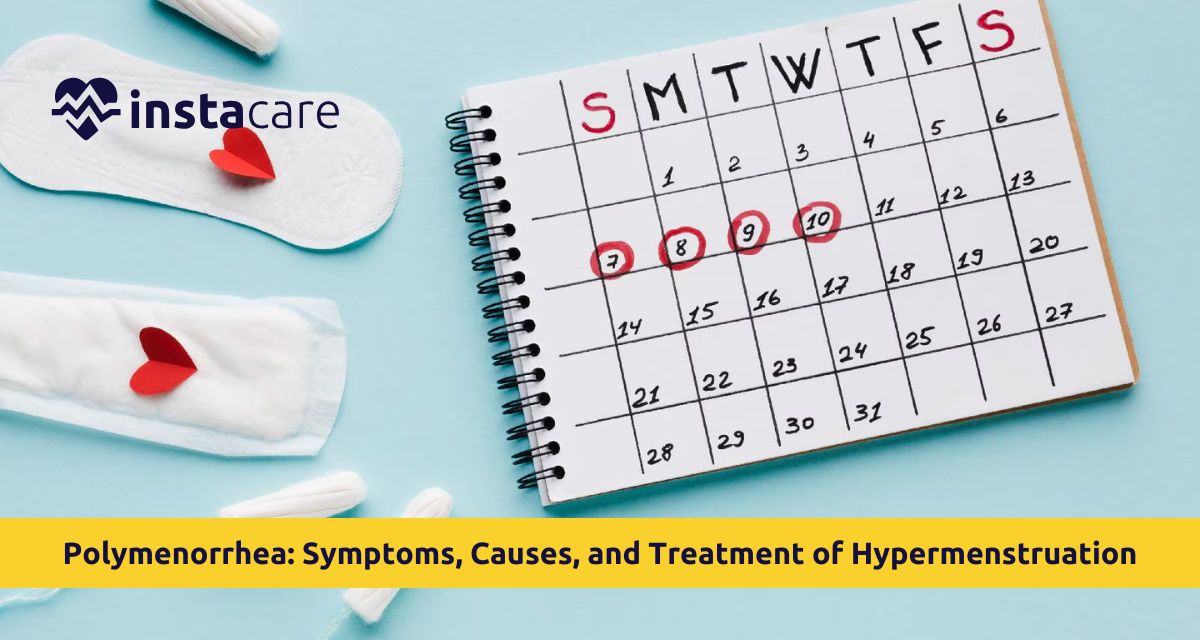What is Polymenorrhea?
Causes of Polymenorrhea
Hormonal Imbalance
- Estrogen-Progesterone Disturbance: Decreased in the luteal phase from excess production of estrogen or progesterone secretion failure
- Thyroid Dysfunctions: Thyrotoxicosis and hypothyroidism can influence normal menstrual timing
- Hyperprolactinemia: Hyperprolactinemia can be capable of stopping normal ovulatory cycles
Medical Disorders
- Polycystic Ovary Syndrome (PCOS): Polymenorrhea and PCOS pathophysiology is multifactorial, wherein PCOS will result in infrequent and frequent menses
- Endometriosis: Can result in irregular cycle menstruation and decreased cycles
- Uterine Fibroids: May lead to more frequent intermenstrual intervals
- Pelvic Inflammatory Disease: Infection may interfere with normal menstrual cycles
Environmental and Lifestyle Factors
Signs and Symptoms of Polymenorrhea
Primary Symptoms
- Each 14-20 day cycle of menses
- Normal bleeding patterns but shorter
- Heavy to normal menstrual flow per cycle
Secondary Symptoms
- Weakness secondary to chronic blood loss
- Weakness and pallor secondary to iron deficiency anemia
- Endocrine changes with the occurrence of mood swings
- Breast tenderness with frequent occurrence
- Menstruation with cramping and bloating
Complications involving
- Chronic weakness due to recurrent blood loss
- Social and occupational disorders due to frequent menses
- Emotional distress and worry due to unpredictable bleeding
Read More: 7 Important Things You Should Avoid During Periods
Complications of Polymenorrhea
Physical Complications
- Iron Deficiency Anemia: Bleeding repeatedly causes continuous blood loss and iron loss
- Chronic Fatigue: Continuous drowsiness impacting functioning and productivity
- Nutritional Deficiencies: Besides iron, other substances get lost
Effects on Reproductive Health
- Shorter luteal phases during implantation
- Irregular ovulation cycles
- Complicated coordination of conception attempts
- Risk of pregnancy complications with uncontrolled disease
Psychological Consequences
- Paranoia regarding irregular menstruation
- Chronic symptom depression
- Isolation because of regular period maintenance
Diagnosis of Polymenorrhea
Medical History and Physical Examination
- Detailed menstrual history and observation of the cycle
- Menstrual family history
- Current lifestyle and medications
- General and pelvic examination
Laboratory Tests
- Complete Blood Count for anemia screening
- Hormonal tests like FSH, LH, estrogen, and progesterone
- Functions of the thyroid
- Prolactin test
- Pregnancy test to exclude complications
Imaging Studies
- Ultrasound of the pelvis to scan the reproductive organs
- MRI in case of suspected complicated pathology
- Hysteroscopy to visualize inside the uterine cavity directly
Treatment Options of Polymenorrhea
Hormonal Therapies
- Combined Oral Contraceptives: Suppresses cycles, decreases frequency of menstruation
- Progesterone Therapy: Ideal in luteal phase defects
- GnRH Agonists: Reserved in end-stage with disseminated underlying disease
Medical Management
- Non-Steroidal Anti-Inflammatory Drugs (NSAIDs): Blanks cramping and menstruation
- Iron Supplementation: Prevention and treatment of anemia due to deficiency
- Thyroid Medications: In the event of thyroid disease diagnosis
Surgical Procedures
- Debulking of fibroids or polyps
- Endometrial ablation in refractory cases
- Hysterectomy as last resort in refractory cases
Prevention and Management of Polymenorrhea
Lifestyle Change
Natural Treatment Options
Monitoring and Follow-up
Conclusion

